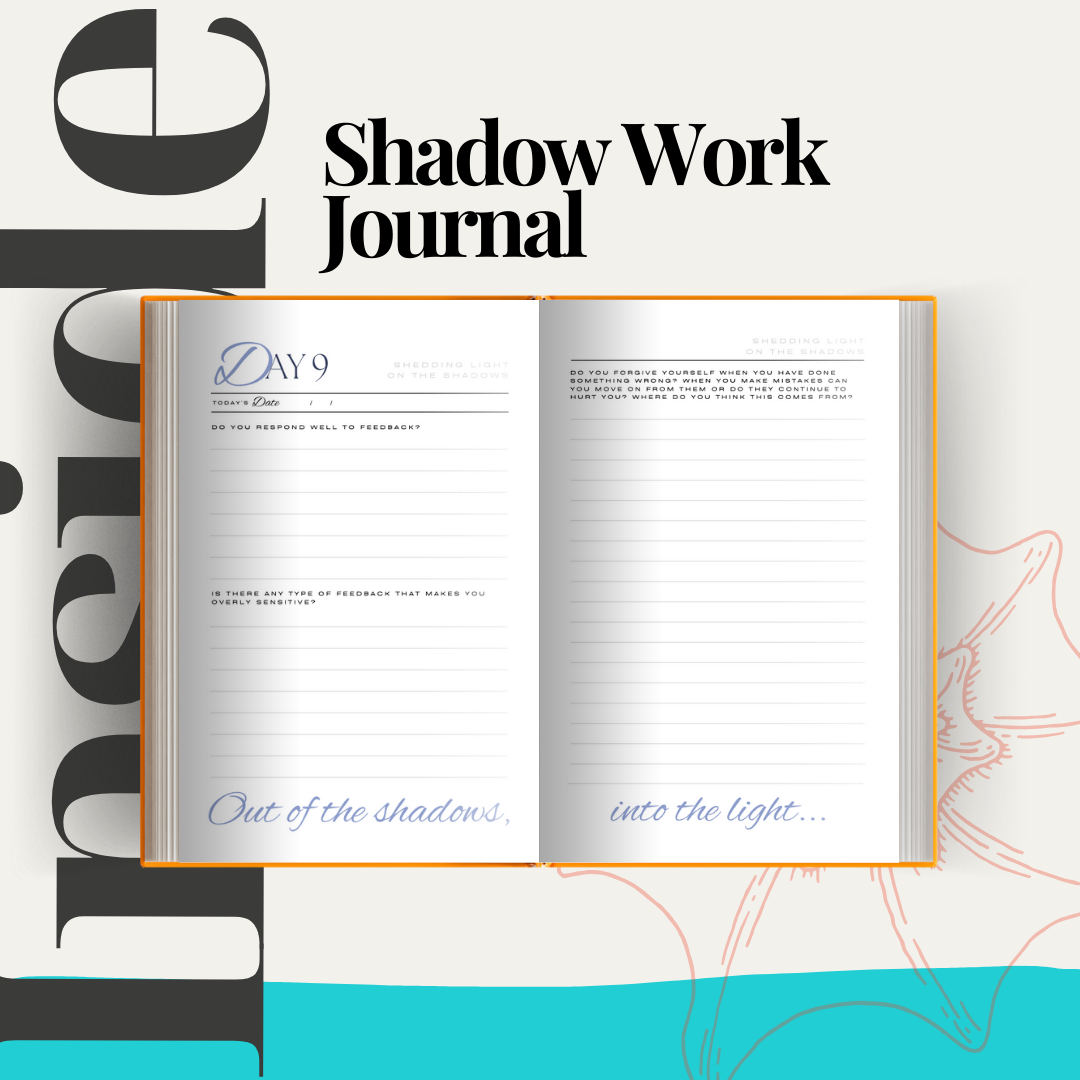Understanding Attachment Styles & How to Move Towards a Secure Attachment
A detailed guide for women.
Have you ever found yourself replaying relationship moments in your head, wondering why you reacted a certain way? Or maybe you're curious about why some people seem effortlessly secure in their connections while others struggle with anxiety or avoidance. The answer might lie in your attachment style. Don't worry—this isn’t a personality flaw; it’s a roadmap to understanding how you connect with others and how you can level up to a secure attachment style. Let’s dive in!

The 4 Attachment Styles (and their sub types)
Attachment styles are rooted in early childhood experiences and manifest in adult relationships. They are shaped by how our caregivers responded to our emotional needs. Let’s explore each style, how it’s formed, and how it shows up in behaviors:
1. Secure Attachment: The Gold Standard
Overview: Secure attachment is formed when caregivers are consistently responsive, nurturing, and emotionally available. For instance, if a baby cries and their caregiver soothes them regularly, the child learns to trust that their needs will be met. This creates a sense of safety and confidence in relationships.
As an adult, having a secure attachment style means you can navigate relationships with balance. You trust easily, communicate openly, and manage conflicts without losing your cool. Think of it as the relationship jackpot—you’ve hit emotional security gold!
Behaviors:
- You’re comfortable expressing your feelings.
- You can rely on others without feeling clingy or losing your independence.
- Conflict doesn’t send you spiraling—you deal with it constructively.
Examples:
- You easily talk to your partner about feeling stressed without fearing judgment.
- When your friend cancels plans, you’re disappointed but understand it’s not personal.
Subtypes:
- Balanced Secure: Feels safe and confident in relationships.
- Earned Secure: Someone who started with an insecure style but grew into security through self-work and healing.
Parenting and Childhood Experiences:
- Parents were consistent, warm, and attentive to your needs.
- Caregivers provided a stable and loving environment.
- You experienced open communication and validation of your feelings.
2. Anxious Attachment: The Worriers
Overview: Anxious attachment develops when caregivers are inconsistent in meeting a child’s needs. One day, your parent might shower you with affection, and the next, they’re emotionally distant. This unpredictability makes you hyperaware of other people’s moods, leading to a fear of abandonment and a craving for validation.
As an adult, this can look like overanalyzing texts, fearing rejection, and feeling clingy in relationships. Your inner monologue might sound like, “Do they really love me?” or “What if they leave?”
Behaviors:
- You overanalyze every text message and worry they’ll leave you.
- You might feel “needy” or struggle with constant reassurance.
- Conflict feels catastrophic—you fear it signals the end.
Examples:
- You text your partner multiple times if they don’t reply quickly, assuming the worst.
- After an argument, you feel anxious and replay the conversation, fearing rejection.
Subtypes:
- Anxious-Preoccupied: Overly dependent on partners for validation.
- Fearful-Anxious: Craves closeness but simultaneously fears it, leading to push-pull behaviors.
Parenting and Childhood Experiences:
- Parents were unpredictable—affectionate at times but emotionally unavailable or critical at others.
- You may have felt like you had to earn love or attention by being “good” or pleasing.
- Experiences of being ignored or having your emotions dismissed could lead to feelings of insecurity.
3. Avoidant Attachment: The Lone Wolves
Overview: Avoidant attachment forms when caregivers are emotionally unavailable or dismissive of a child’s needs. Imagine reaching out for comfort only to be met with indifference or told to “toughen up.” You learn to suppress your emotions and rely solely on yourself.
As an adult, you might pride yourself on independence but struggle with intimacy. Vulnerability feels like walking into a trap, so you avoid it altogether.
Behaviors:
- You’re uncomfortable with too much intimacy.
- You might “pull away” when things get too close.
- Emotional vulnerability feels like a trap.
Examples:
- You avoid deep conversations with your partner, preferring to keep things surface-level.
- When a friend tries to comfort you, you brush it off and say you’re fine, even if you’re not.
Subtypes:
- Dismissive-Avoidant: Emotionally distant and self-reliant, often downplaying the importance of relationships.
- Fearful-Avoidant: A mix of avoidance and anxiety—wanting connection but fearing rejection.
Parenting and Childhood Experiences:
- Parents were emotionally distant or dismissive, often discouraging expressions of vulnerability.
- You may have been taught to “deal with it yourself.”
- Attempts to seek comfort or affection were often ignored or belittled.
4. Disorganized Attachment: The Wild Card
Overview: Disorganized attachment often stems from trauma or inconsistent caregiving, particularly in environments where a caregiver is a source of both comfort and fear. Picture a child seeking safety from the very person who causes them distress. This creates a confusing dynamic of wanting intimacy but fearing it.
As an adult, relationships might feel chaotic and intense, with trust being a significant hurdle. You crave closeness yet sabotage it out of fear.
Behaviors:
- You might alternate between craving closeness and pushing people away.
- Relationships feel chaotic, and trust is a struggle.
- Emotional triggers can feel overwhelming.
Examples:
- You lash out at your partner for being late but then feel guilty and desperately seek their reassurance.
- You end a relationship abruptly because of a fear of being hurt but regret it soon after.
Subtypes:
- Trauma-Induced: Strongly tied to past experiences of neglect or abuse.
- Situational Disorganized: Triggered by specific relationships or events.
Parenting and Childhood Experiences:
- Parents may have been a source of fear due to abuse, neglect, or unpredictable behaviour.
- Caregivers were inconsistent—both comforting and frightening.
- You may have grown up feeling unsafe or confused about whether love was genuine.
Inconsistent parenting where needs aren't met are at the root of all attachment dysfunctions. As kids, we were just trying to survive, but our so were our parents.... We're all on this earth doing life for the first time and making lots of mistakes along the way. When you understand this, you are approaching this sensitive topic with grace. The question doesn't become: who gets the blame, but more: how do we heal from here?
How to Identify Your Attachment Style
Want to figure out where you land? Grab a journal (or a cozy spot with your favorite latte) and reflect on these questions:
For Secure Attachment:
- Are you generally comfortable in relationships?
- Can you express your feelings without fear?
- Do you trust your partner to be there for you?
Parenting and Childhood Clues:
- Your parents were warm, supportive, and consistent.
- You felt safe expressing your emotions and needs.
For Anxious Attachment:
- Do you often worry about being abandoned?
- Do you need frequent reassurance from your partner?
- Do conflicts make you feel panicked or overly emotional?
Parenting and Childhood Clues:
- Your parents may have been inconsistent—sometimes attentive, other times unavailable.
- You might have felt unsure of when you could count on them.
- Emotional outbursts or clinginess may have been responses to seeking attention.
For Avoidant Attachment:
- Do you feel uncomfortable with too much closeness?
- Do you prefer to handle emotions alone rather than sharing?
- Do you find yourself pulling away when things get serious?
Parenting and Childhood Clues:
- Your parents may have been emotionally distant or dismissive.
- Vulnerability was discouraged, and independence was overly emphasized.
- You learned to suppress emotional needs to avoid rejection.
For Disorganized Attachment:
- Do you feel a mix of wanting intimacy but fearing it?
- Do you often feel confused about your emotions in relationships?
- Have past traumas heavily influenced your approach to connection?
Parenting and Childhood Clues:
- Your parents may have been a source of both comfort and fear.
- Experiences of neglect, abuse, or unpredictable caregiving shaped your trust issues.
- You might have felt unsafe expressing emotions or needs.
Moving Toward a Secure Attachment Style
Here comes the fun part: growth! No matter where you start, you can work toward a secure attachment style. It takes awareness, practice, and a sprinkle of self-compassion. Let’s get started:
If You’re Anxious:
- Practice Self-Soothing: Learn to calm yourself instead of relying solely on your partner for reassurance. Try deep breathing, journaling, or grounding exercises.
- Challenge Negative Thoughts: Replace “They’re going to leave me” with “We’re having a rough day, but it doesn’t mean they’ll leave.”
- Communicate Clearly: Express your needs without overloading your partner. For example, say, “I feel anxious when I don’t hear from you—can we set up a time to check in?”
- Build Independence: Focus on hobbies, friendships, and personal growth so your world doesn’t revolve solely around your partner.
Examples:
- Instead of calling your partner five times in a row, you journal your feelings and then call once with a clear message.
- You start a yoga class to build a sense of self outside your relationship.
If You’re Avoidant:
- Lean Into Vulnerability: Start small, like sharing how your day went or talking about a favorite memory.
- Challenge “I Don’t Need Anyone” Thinking: Recognize that healthy relationships enhance your life without compromising your independence.
- Practice Emotional Presence: When a partner expresses feelings, listen actively instead of shutting down.
- Create a Safe Space for Closeness: Gradually allow intimacy by setting boundaries that feel comfortable and expanding them over time.
Examples:
- Instead of deflecting when your partner asks how you feel, you say, “I’m not used to sharing, but I’ll try.”
- You agree to a weekly check-in with your partner to discuss feelings.
If You’re Disorganized:
- Seek Support: A therapist can help untangle past traumas that influence your attachment style.
- Learn Emotional Regulation: Practice techniques like mindfulness or meditation to manage overwhelming feelings.
- Journal Your Triggers: Understand patterns in your behavior to anticipate and manage emotional reactions.
- Create Consistency: Focus on building predictable routines and relationships that foster trust and safety.
Examples:
- You notice that certain arguments trigger memories of past trauma, so you journal these feelings and discuss them with a therapist.
- You set boundaries with a partner to create a routine, such as regular date nights.
For Everyone:
- Educate Yourself: Read books, listen to podcasts, or join workshops on attachment styles. Knowledge is empowering!
- Be Patient: Changing attachment styles is a journey, not a sprint. Celebrate small wins along the way.
- Practice Gratitude: Focus on what’s going right in your relationships instead of fixating on fears or doubts.
- Surround Yourself with Secure Models: Whether it’s friends, family, or mentors, observing secure behaviors can inspire change.
Final Thoughts
Your attachment style is more than just a label—it’s a roadmap to understanding yourself and your relationships. By recognizing your patterns, exploring your childhood influences, and committing to growth, you hold the power to transform your connections. Remember, no matter where you start, healing and growth are always possible. Take it one step at a time, and celebrate the progress you make along the way. Here’s to thriving in love, confidence, and self-awareness. And as always, be kind to yourself and those around you!
